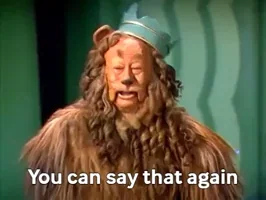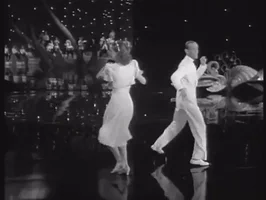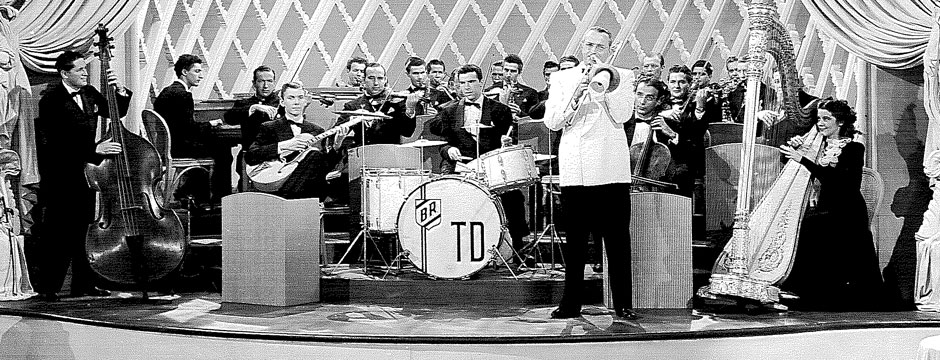Tallulah- Ship Ahoy, 1942. Eleanor Powell and Buddy Rich. Dance Director: Bobby Connolly
She has been called the "queen of tap" and is said to have intimidated Fred Astaire with her skill.
 Honestly, even as a die-hard Fred Astaire fan... I don't blame him.
Honestly, even as a die-hard Fred Astaire fan... I don't blame him.Here comes Eleanor Powell!
I am going to bet that you haven't heard of this movie. I could be wrong!
I have to admit that I hadn't heard a thing about it until I went to research Eleanor Powell and fell head over heels in love with this dance sequence.
The film that our upcoming dance is from came out in 1942 and wasn't a big hit in spite of its great dances and star-studded cast. At the beginning of this clip, you can spot Bert Lahr (possibly better known as the Cowardly Lion) and the indomitable comedian Red Skelton.
 This film is also notable as one of the first films Frank Sinatra ever appeared in. He is seen very briefly as a singer in Tommy Dorsey's Band.
This film is also notable as one of the first films Frank Sinatra ever appeared in. He is seen very briefly as a singer in Tommy Dorsey's Band.
Oh yeah, and this movie has the Tommy Dorsey Band! Big-Band fans rejoice!
Trivia: Apparently, the Broadway star John Raitt (Pajama Game, Oklahoma, Carousel a bunch of stuff, also Bonnie Raitt's dad...) is also in this film as a sailor. Someone see if they can find him and send me a screenshot!
Since we are talking Tommy Dorsey, his drummer and the guy featured in this clip is Buddy Rich. While he isn't actually a dancer in the piece he is vital to it (and generally amazing). Here is some background.
:max_bytes(150000):strip_icc()/buddy-rich-5b60bed346e0fb0082ae5acd.jpg) Buddy Rich was born into a Vaudeville family and became part of their act at a very young age. He went to Broadway as "Baby Traps the Drummer" when he was four.
Buddy Rich was born into a Vaudeville family and became part of their act at a very young age. He went to Broadway as "Baby Traps the Drummer" when he was four.Makes me feel that I was a very unaccomplished four-year-old.
Anyway, he later played with Benny Carter, Les Brown, and Charlie Parker as well as heading his own Big Bands. In addition, he was a session drummer for Ella Fitzgerald, Louis Armstrong, and many others.
He apparently had an on again-off again feud with Frank Sinatra for many years. They did stay friends throughout, which is impressive.
From everything I can find, the "Dance Director" for this film was Bobby Connolly (not to be confused with Billy Connolly). I had never heard Bobby Connolly's name but boy have I seen his work! That being said, I am not sure how much of the piece he choreographed and how much was Powell's.
 |
| From L: Ray Bolger (as Scarecrow), Victor Fleming, BOBBY CONNOLY, Mervyn Leroy |
AND
DRUMROLL PLEASE
And brace yourselves cause some big dance history names are about to be dropped.
Eleanor Powell:
Eleanor Powell began dancing as a child, her training was in ballet (which is pretty evident in how she carries herself) and she was brought onto the Vaudeville scene at age 11.
On her path to make it to Broadway she started working at expensive supper clubs. While there she met and worked with Bill "Bojangles" Robinson.
According to the Library of Congress's Performing Arts Database Bio of her (which I highly recommend and can be found here):
It was the heel-dropping rhythm tap dancing of John Sublett Bubbles, however, that most influenced her footwork and rhythmic style. Powell met Bubbles in 1928, on a twenty-week vaudeville tour that included New York's Paramount Theater. On the same bill as Buck and Bubbles, and doing five shows a day, she said they were each other's most appreciative audience. She remembered "lying on my stomach in the wings, watching Bubbles dance to me." Between shows, dancers spent time backstage trying new steps. Wearing high-heeled tap shoes with a Cuban-heel-- one that is wider than the spiked or hour-glassed heel of a chorus dancer-- she began to master the heel-drops that marked Bubbles' style of rhythm tap dancing.
Yeah. Buck and Bubbles will get their own post. Don't worry.
Anyway, with some difficulty and some additional tap classes, she made it to Broadway somewhere around the age of 17.
 She was soon offered a shot in Hollywood and (supposedly) attempted to fob off the studio-heads by asking for far too much money. The studios complied and she was eventually brought on board.
She was soon offered a shot in Hollywood and (supposedly) attempted to fob off the studio-heads by asking for far too much money. The studios complied and she was eventually brought on board.Thank goodness!
Unlike many other female dancers of her time period, she was not always forced into the role of duet partner and she wasn't paired off in a Hollywood film-coupling (ala Fred and Ginger). She danced her own dances and when she was in a duet (Begin the Beguine is a great example) she wasn't just there to make her partner shine.
Due to the inherent sexism of the time, female performers were seldom acknowledged for their skills. Eleanor Powell is one of the few from that time regarded as equal to or better than their male counterparts who dominated the business.
She and Fred Astaire did a dance together called Begin the Beguine which is very famous. It came from the film Broadway Melody of 1940, where, as I mentioned earlier, Fred Astaire was intimidated by how fabulous a dancer Powell was. There are a lot of stories about filming Broadway Melody, some claim that Astaire didn't want to work with Powell again because he was afraid she would outshine him, others just say that he was intimidated by meeting his match. It will take some more digging for me to parse some of the fact from fiction.

Astaire said in his autobiography:
"She 'put 'em down like a man', no ricky-ticky-sissy stuff with Ellie. She really knocked out a tap dance in a class by herself."
She did a little under 20 films before she retired from showbiz in total which... really isn't that much! If you haven't heard of her, that's probably why. At the time she was one of the studio's biggest banking stars and known as one of the best tap dancers in the business.
OK
The dance,
 The music number that gets us into the dance is about a minute and 25 seconds in total and is pretty standard silly of the time. Bert Lahr gets to have a little fun and we get Eleanor Powell kinda singing (she was usually dubbed so I am not sure if that is actually her). There are also some pretty
The music number that gets us into the dance is about a minute and 25 seconds in total and is pretty standard silly of the time. Bert Lahr gets to have a little fun and we get Eleanor Powell kinda singing (she was usually dubbed so I am not sure if that is actually her). There are also some pretty aggressively shimmying backup dancers. It is backed by the Tommy Dorsey Band, which is amazing.
The dance itself is mostly solo, with a few momentary exceptions; none of which are her scripted love interest, Red Skelton (who wasn't bad shakes as a dancer himself). They may have wanted her to have this utterly epic solo or it may be that young Red Skelton couldn't keep up. No idea!
First off in the dance itself, Powell and Rich have a great rhythm exchange. I find this really interesting because it has a nice tie into the history of swing dance
DANCE HISTORY BREAK
Swing dance and swing music are highly interconnected, obviously. In the early days, bands and dancers would improvise off of each other. The dancers would set the time (where the "time step" came from) and the band would play off of it.
 Powell manages to balance her ballet training and elegant style with her undeniable rhythm tap influences, both in the footwork itself and in her upper body. This is unusual since ballet tends to be a very high center of gravity with a light, weightless feel. Rhythm tap is about the sound first and foremost, the upper body is not usually hyper choreographed and frequently holds a lower center of gravity. She switches seamlessly back and forth; the jumps look like flying and the taps sound like gold. She uses plenty of flashy jumps and acrobatic maneuvers (which I adore). Every leap looks casual and like a natural lead into her next complex tap combo. Absolutely stunning.
Powell manages to balance her ballet training and elegant style with her undeniable rhythm tap influences, both in the footwork itself and in her upper body. This is unusual since ballet tends to be a very high center of gravity with a light, weightless feel. Rhythm tap is about the sound first and foremost, the upper body is not usually hyper choreographed and frequently holds a lower center of gravity. She switches seamlessly back and forth; the jumps look like flying and the taps sound like gold. She uses plenty of flashy jumps and acrobatic maneuvers (which I adore). Every leap looks casual and like a natural lead into her next complex tap combo. Absolutely stunning.They have a few too many camera cuts for my taste. Fred Astaire had a theory that a dance looks more fluid the fewer camera cuts you have and I tend to agree. That being said, she moves around in a very large space. At the time, maneuvering the large camera's through that might have confined the dance.
All in all, one of my favorites.
Enjoy



Comments
Post a Comment